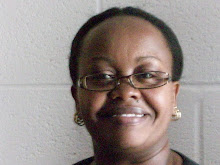Women telling their stories using community radio
By Grace Githaiga
Community radio is a sector that allows communities to develop and own communication structures through generation of content, and managing the systems. Community radio stations are owned and operated by the communities they serve. They are non-profit, non-partisan, and usually non-sectarian, and operate in a participatory way, relying on volunteers for reporters, producers and newscasters. Through community radio, poor constituencies such as women, can develop their own news programs and present discussions on matters affecting their community. They share information in a language they understand. This allows them to name such topics as poverty in a language that they understand as well as articulate their social agendas and bring the same into national foras.
Good examples include Mangelete women’s radio in Kenya and Kagadi Kibale in Uganda. Theses debate issues, produce weekly programs, and develop talkback radio programs by phone or mail drop. Mangelete’s popular programs include those of reproductive health, nutrition and campaigns to stop illegal brews. For Kagadi, a popular program is on gender violence, which has developed into a rapid response unit for abused women.
Community radio programming is engendering a process, where poor constituencies isolated and marginalized are becoming energized, developing informed opinions, and becoming more adept at using information to protect themselves, to make informed decisions and to get results.
Lobbying for recognition of the community media has presented many challenges, including those of recognition, provision of communication space, and legislation bottlenecks. Despite the slow speed in growth, and the fact that any advocacy process rarely produces immediate tangible results, I have witnessed positive results of community engagement with the authorities, and can attest to increased community empowerment due to participation in local media production. The governments of Kenya, Uganda and Tanzania have now recognized community broadcasting in their broadcasting legislation, or are considering provisions to formally legalize community radio.
Community radios have a public duty and responsibility of framing and getting information on human rights and social injustice to the public sphere, play the surveillance role, and give enormous voice to people who would never have the opportunity to speak and seek knowledge. Also they open microphones to authentic voices and allow people to speak for themselves therefore contributing to media pluralism.
Subscribe to:
Post Comments (Atom)

No comments:
Post a Comment